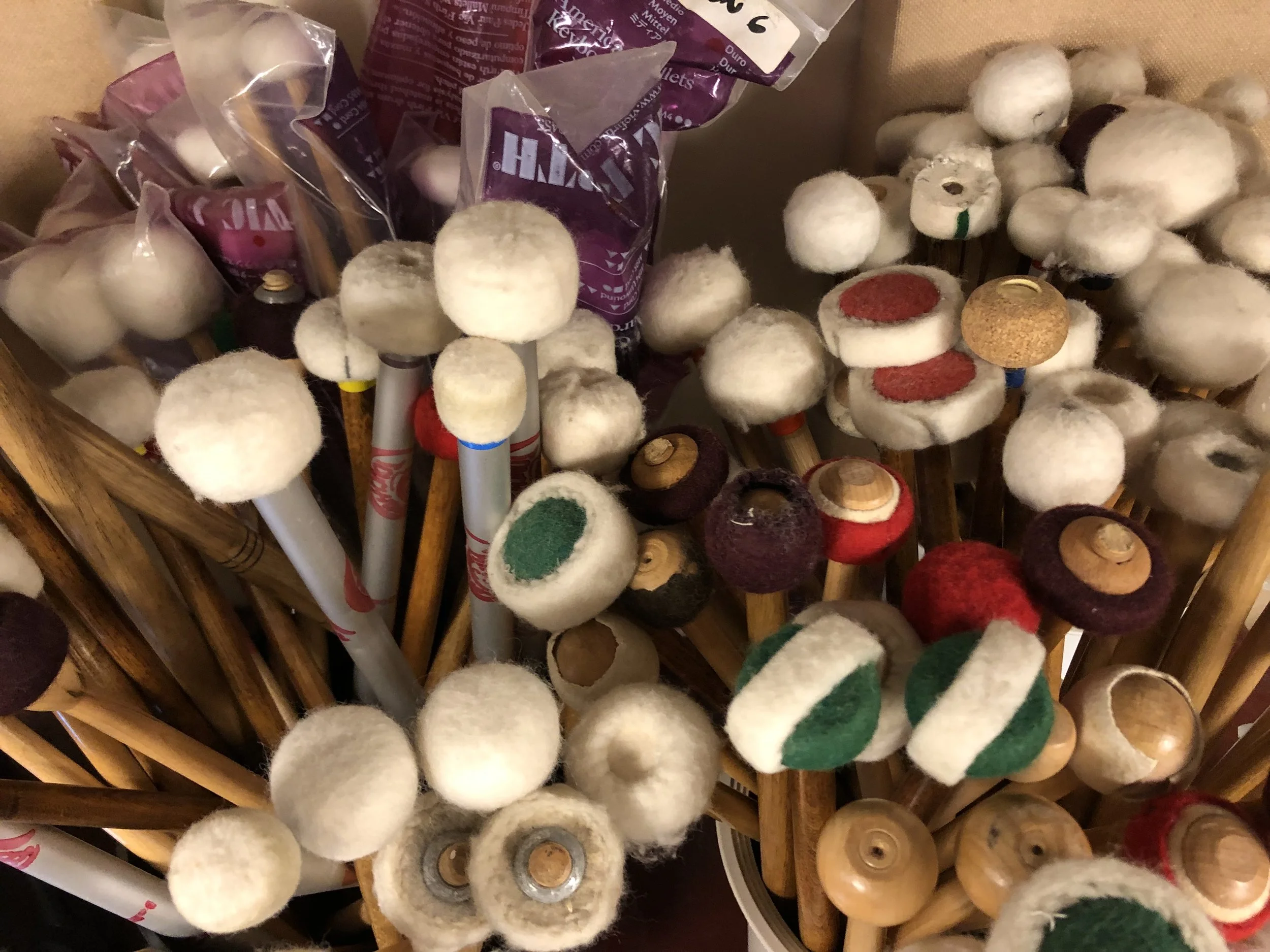What stick should I get?!?!?
“What’s a good all-around stick for me to get?”
“What’s your recommendation for a professional general medium timpani mallet?”
“I currently don’t have a set of timpani mallets, what should my first pair be?”
My answer to these questions………. well, actually they are impossible questions to answer…kind of. Who am I to give advice to a complete stranger?
I see these kinds of posts on social media sites all the time and I cringe at most of the answers…but not all the answers. “You absolutely have to have a pair of Duff 2’s.” “Joe Shmoe Mallets are making great mallets”. “Donkey Head Mallets are pure awesomeness” ……. maybe these statements are all true…according to the person writing them, but according to someone else they are completely false.
The real answer lies in what is best for the individual asking the question. For example, I have colleagues in big orchestras who absolutely swear that a firm cartwheel mallet is the basis of a perfect timpani sound…. I have other colleagues who would never touch a cartwheel mallet…so who’s right? The answer…. neither……. or both. The real conundrum is, what is the person asking the question’s idea of a perfect timpani sound. Hopefully he/she has an opinion or a sound concept.
This brings up a larger issue……the demise of creativity…. it’s not completely absent, but it sure is waning. More and more people expect to be told how or what to do instead of researching, investigating, and experimenting until the problem becomes solved. This is not to say that asking for advice is a bad thing, certainly not. But, before jumping on the asking train, why not do a little investigating yourself.
So, the topic here is stick choice, so let me run a couple scenarios by you. You are a budding timpanist…you want to get better. So, you find yourself a competent teacher, you start practicing a bit more at the high school (because come on, who owns their own timpani). You have a pair of mallets, but you know that different mallets can give you more colors and articulation and what not.
First order of business is to listen……and I mean really listen, to what your current sticks sound like. Try to hear the different overtones that the timpani gives back when you strike the drum. Then have a friend hit the drum (hopefully this friend knows how to hit a timpani), and you listen from 20 feet away…what’s your impression now? Maybe this friend is a percussionist and owns some sticks that you don’t have. Might as well try those sticks and see what they sound like. Maybe you belong to the local youth orchestra…. those guys probably have sticks too. Now, maybe you can try them in a concert type hall or a big performance space (don’t forget to try your own mallets again in this same venue) ……get the picture?
Second order of business…talk to your teacher…he’s bound to have some insight on this subject. Have you thought about calling someone who plays in your local orchestra? You may not study with him or her, but I’m betting they would have a sympathetic ear. Some really great players have web sites that have a comments page…. doesn’t hurt to write in and ask some questions.
Third, go and listen to some concerts by whatever orchestra or band is near you…you might even be able to see what the timpanists has in this hand, and if not, wait for him after the concert and ask him.
Fourth, listen to recordings. Listen to orchestras and find out who is playing timpani in that recording. Is every note clear? What kind of sound is it? Etc.…. etc.… get the picture?
Once you have an idea of the differences in the timpani mallet selection world, try to get a wide variety of sticks…. little by little. You will eventually gravitate to a certain type perhaps. And then as you grow musically, you might change or refine. It’s a very gradual process but an open mind is essential.
Happy stick hunting!!!

